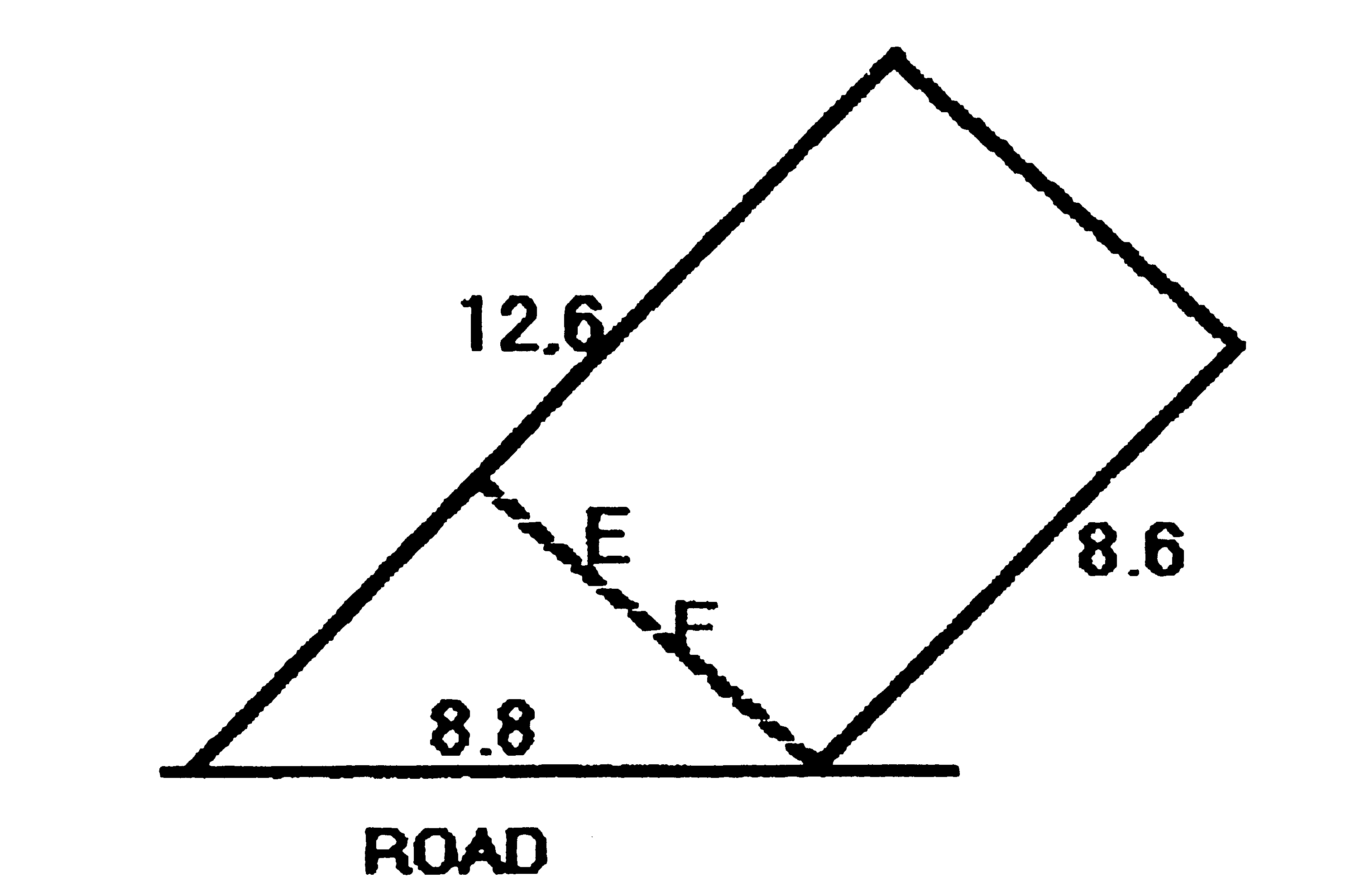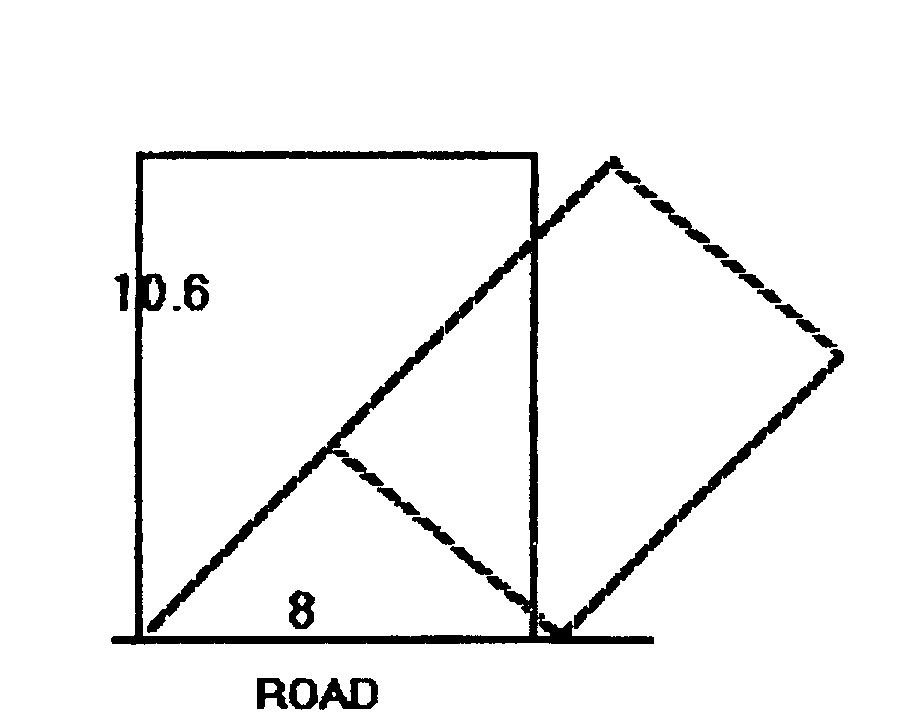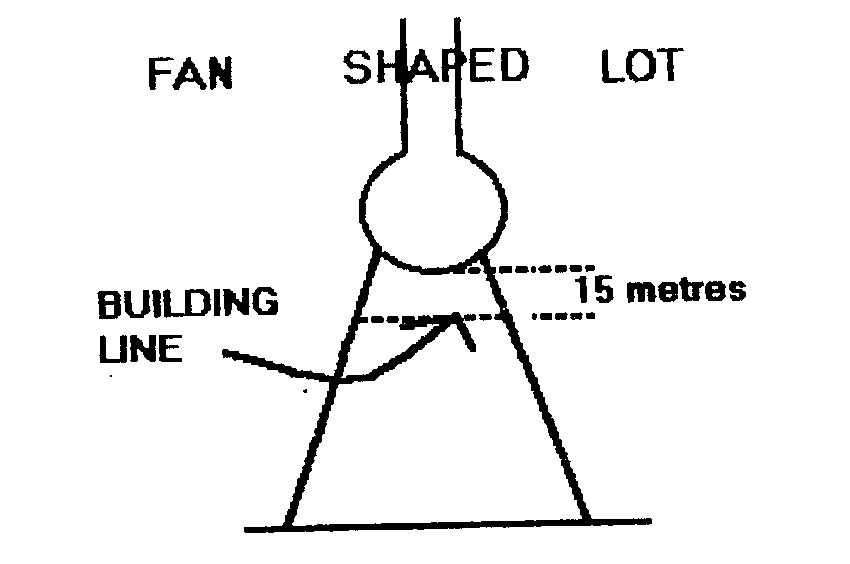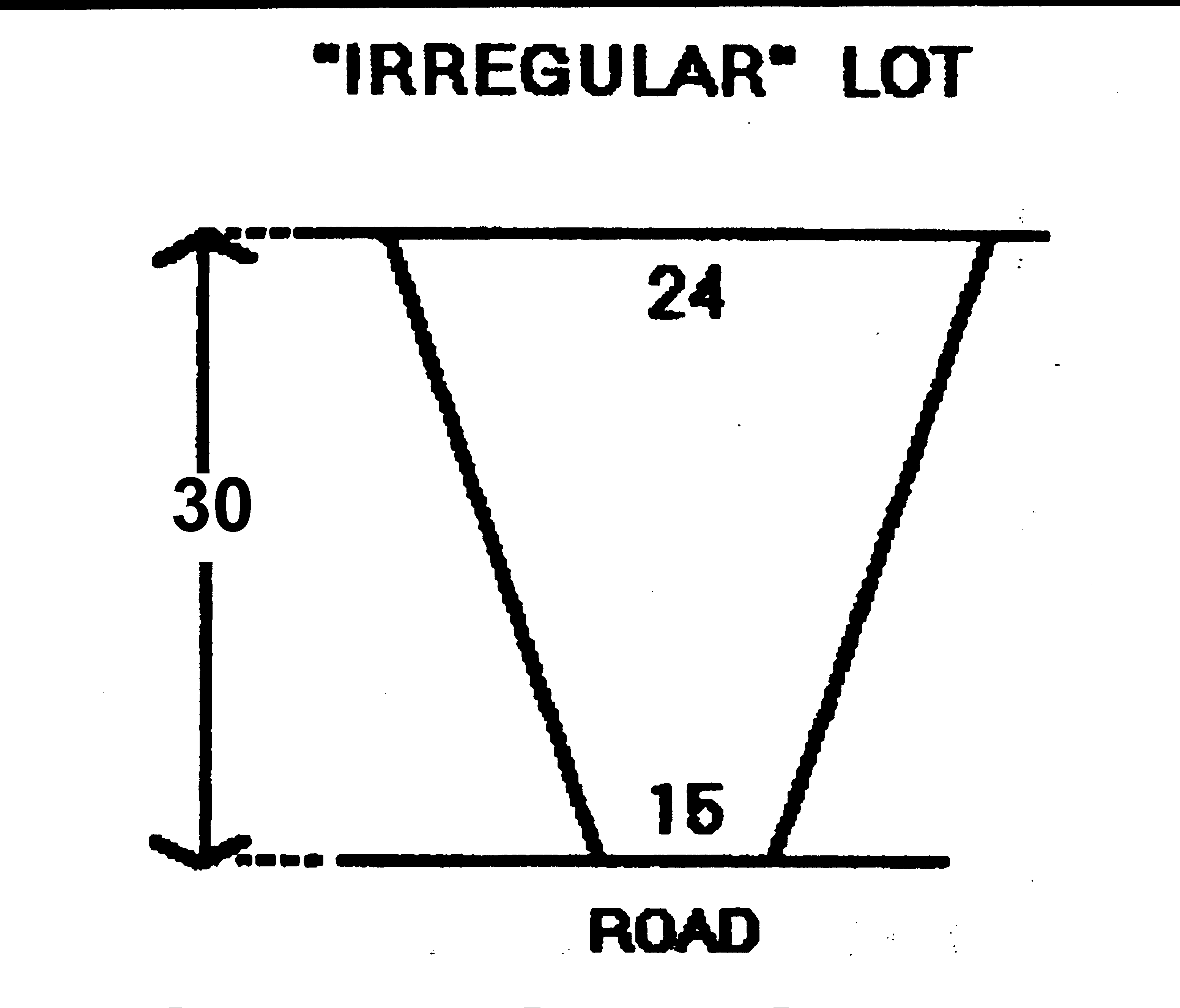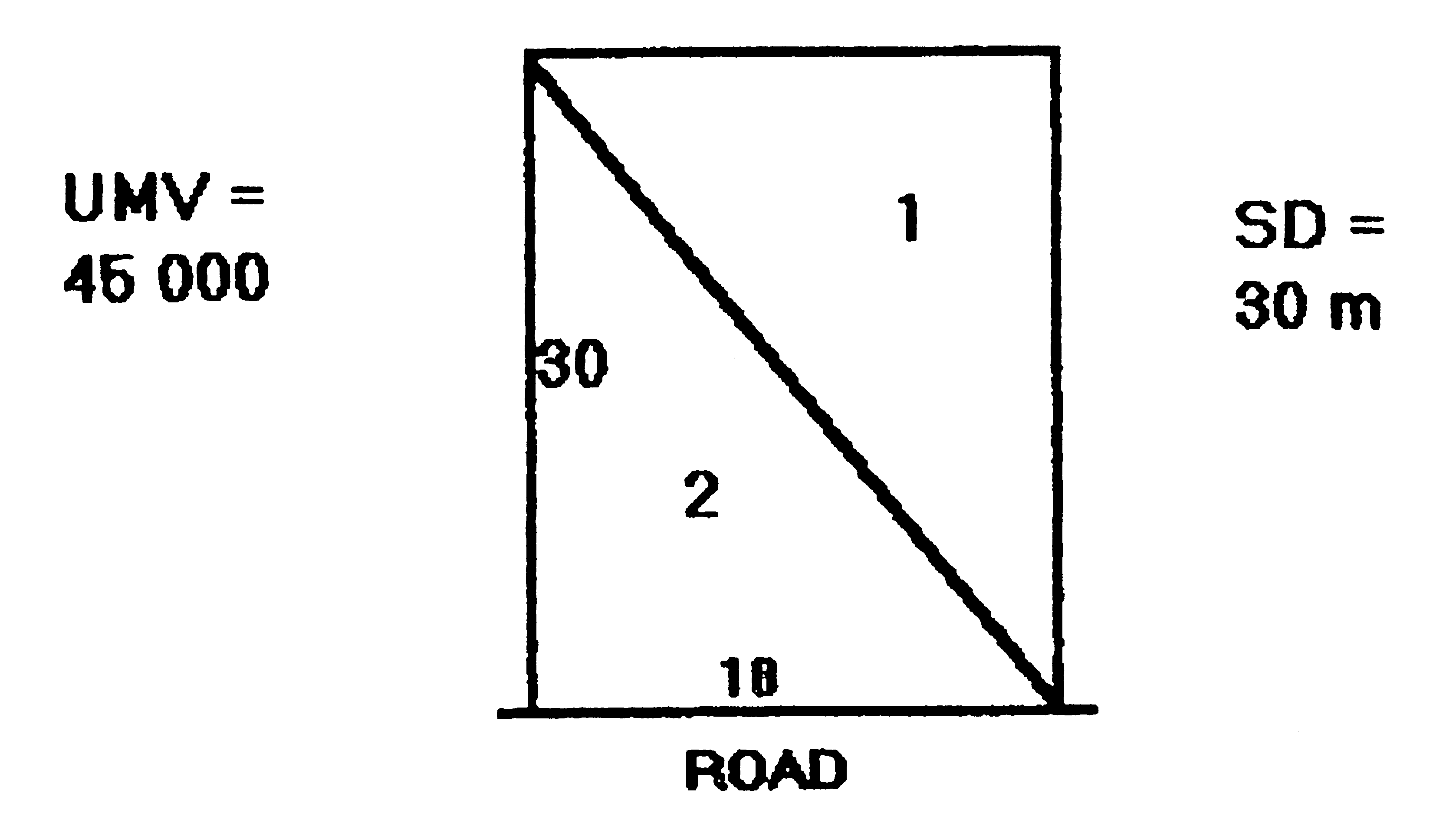IRREGULAR
BLOCKS – DEPTH FORMULAE
PLOTTAGE
(SHAPE) AND LAND VALUES
Most
subdivided lots are of good size and have a regular rectangular shape
that is, they have good plottage. However, some lots do not have a
good shape making them more difficult to utilize. Therefore, their
utility value and highest and best use are less than that for lots
with good plottage.
EFFECTIVE
DIMENSIONS
Irregular
shaped blocks can be valued using effective dimensions if the land is
not too irregular. Some irregular blocks are caused by road
resumptions leading to truncated blocks.
TRUNCATED
BLOCK
EFFECTIVE
FRONTAGE (EF)
The
effective frontage is the rectangular or square width of the lot. For
the example attached it is about 7 metres.
EFFECTIVE
DEPTH
The
effective depth is the mean of the 2 sides. For the example attached:
(8.6+12.6)/2
= 10.6 metres
Therefore,
the value of the irregular lot is equivalent to the value of the
regular block shown in the attached diagram.
EFFECTIVE
BLOCK
The
land is valued as a 7 * 10.6 regular lot using normal valuation
methods.
CUL
DE SACS (FAN SHAPED BLOCKS)
The
cul de sac is a popular and efficient method of subdivision in
residential and industrial developments. It is particularly useful
for accessing otherwise, landlocked rear land common in large in
globo lands. Typical lots that result at the end of the cul de
sac are called fan shaped blocks. To value fan shaped
blocks they can be converted into equivalent regular shaped lots
using the effective dimensions method.
The
attached diagram shows 3 fan shaped blocks of different shapes and
sizes.
FAN
SHAPED BLOCKS
The
3 lots above are residential fan shaped lots typically found at the
end of a cul de sac subdivision. The first two have poor plottage
(shape) as it is difficult to fit an average size house and garage on
the land. Further, it is difficult to use the triangular corners for
example, a swimming pool. Such lots have poor utility compared
to otherwise equivalent inside blocks and therefore, a lower market
value.
The
loss of utility is even more marked if the land use is more intensive
for example, industrial land. The poor plottage would lead to
increased building costs and wasted space compared to inside
industrial land. Valuers have devised methods for valuing land with
poor plottage using effective dimensions.
EFFECTIVE
FRONTAGE (EF)
The
effective frontage is the width of the lot at the building alignment.
The building alignment is the distance from the frontage to the
building line (the setback at which the house is allowed to be
built). This will depend upon council and development authority
policy and is usually stated in the town plan. For example, in the
attached diagram the effective frontage is about 35 metres.
EFFECTIVE
DIMENSIONS FOR A FAN SHAPED BLOCK
EFFECTIVE
DEPTH (ED)
The
effective depth is the square depth of the lot from the street
frontage. For the diagram above it is about 65 metres.
EQUIVALENT
INSIDE LOT
The
fan shaped lot is valued as if it is a regular lot with a frontage of
35 metres and a depth of 65 metres.
BATTLE
AXE (HATCHETT SHAPED) BLOCKS
Battleaxe
or hatchet shaped blocks are an efficient way of subdividing rear
land or otherwise "landlocked" land. A battleaxe lot is
illustrated below.
BATTLEAXE
BLOCK
Similar
considerations apply to the valuation of a battleaxe lot as would
apply to the valuation of a fan shaped lot. Access is via an access
corridor or “handle” but because it is used for access purposes
only and is otherwise, a liability requiring private maintenance, it
is not valued as part of the land. The value of a battle axe block
should be by direct comparison of comparable battleaxe blocks if such
sales are available. If they are not available, the valuer will have
to adjust otherwise comparable sales with a normal frontage. The
value of a battleaxe block is a function of:
- length, slope, and state
or repair of the access corridor.
- plottage and area of the
useable block.
- aspect or view does
it adjoin a reserve?
- neighbours. The more
neighbours then less value because of loss of privacy, the need of
having to negotiate with a number of neighbours over fencing matters
and the unsightliness of boundary fences constructed with different
materials.
THE
VALUATION OF IRREGULAR LOTS USING THE "AUSTRALIAN RULE"
Another
Australian rule can be used to value lots with a frontage different
to the rear boundary. For example the irregular block shown in the
diagram below:
IRREGULAR
BLOCK
EFFECTIVE
FRONTAGE (EF)
The
Australian rule assumes the following weighting formula to calculate
the effective frontage:
EF
= ((2*F)+R)/3
Where:
EF
= effective frontage
F
= width of frontage
R
= width of rear line.
Therefore,
the effective frontage for the above lot is:
EF
= ((2*15)+24)/3 = 18 metres
EFFECTIVE
DEPTH (ED)
The
effective depth is the square depth from the frontage. For the above
lot is about 30 metres. The lot can now be valued as a normal
rectangular lot with the dimensions; 18 * 30 metres.
EXAMPLE
The
Australian rule can be used to value triangular lots such as lots 1
and 2 in a commercial ribbon development in the diagram below:
TRIANGULAR
COMMERCIAL BLOCKS
ANSWERS
LOT
1: EF = ((2*0)+18)/3 = 6 metres
Therefore,
market value =
45 000 * 6 * 100% = $270 000
LOT
2: EF = ((2*18)+0)/3 = 12 metres
Therefore,
market value =
$45 000 * 12 * 100% = $540 000
NB: Lot 1 is assumed to have some access to the
street.
See
depth table questions
7
